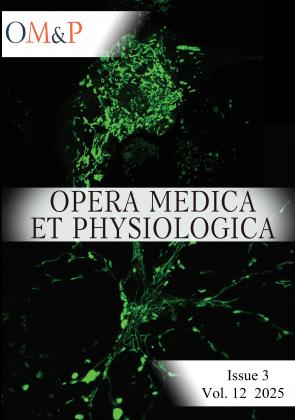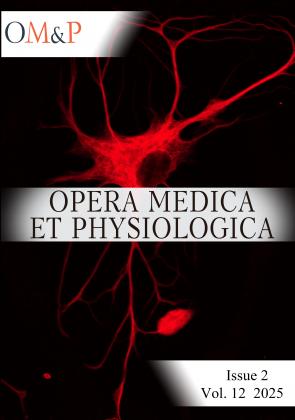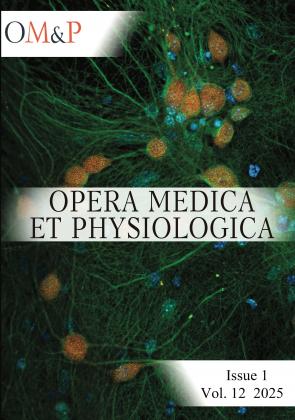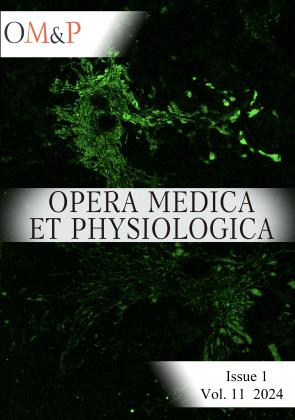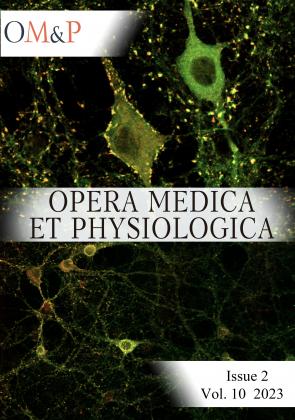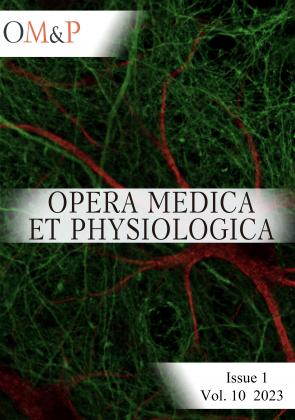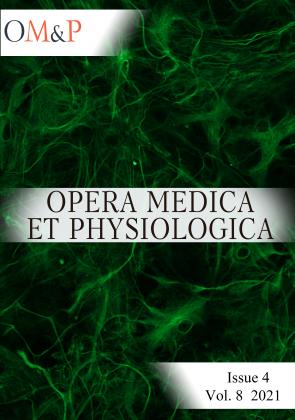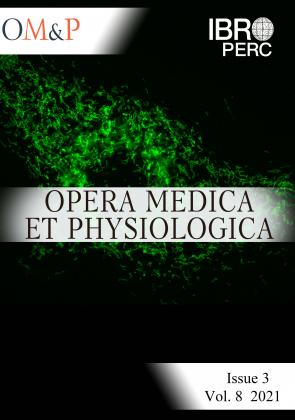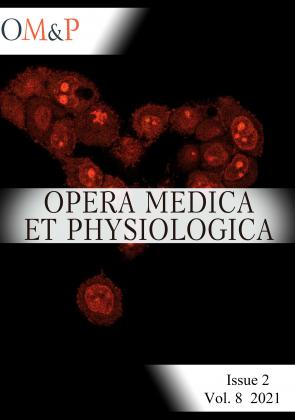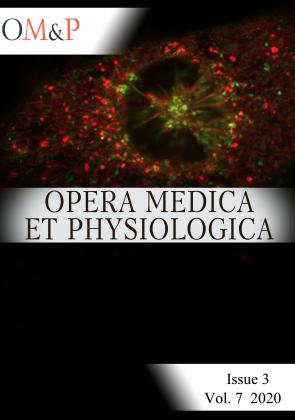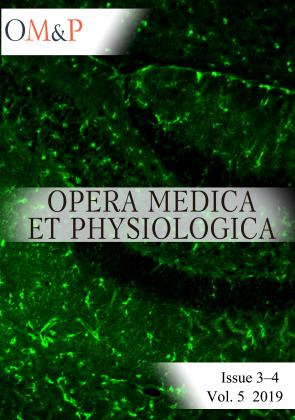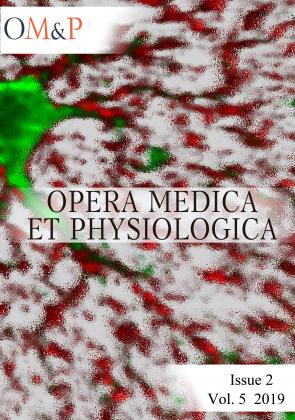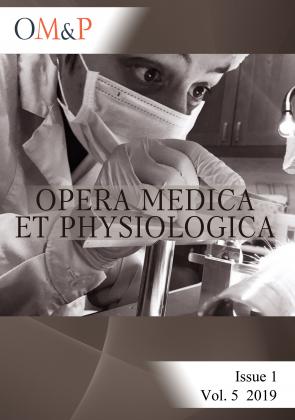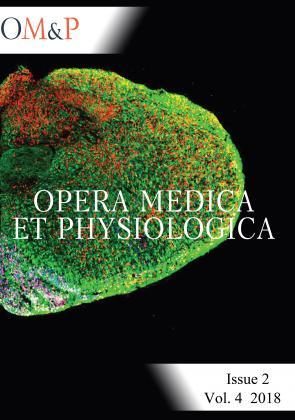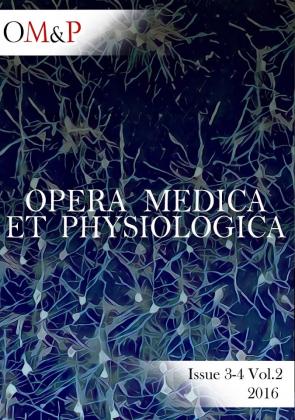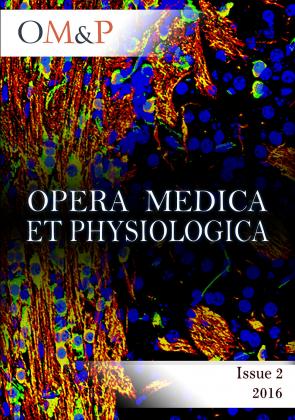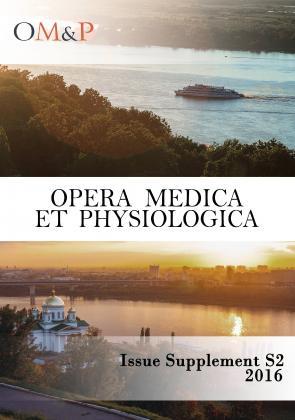Issue 2 | June 2024
Breast cancer (BC) is one of the most common causes of death among women in the world. This study investigated the role of global DNA methylation (5mC) and hypoxia-inducible factor 1 alpha (HIF-1α) levels in BC disease progression. Blood samples were collected from 40 patients with benign breast tumors, 40 patients with malignant breast tumors, and 40 healthy subjects. Patients with malignant breast tumors were divided into two groups: women in stage II (low-level), and patients in stages III and IV (high-level). Genomic DNA was isolated from whole blood samples from the subjects and used for global DNA methylation. Furthermore, the levels of HIF-1α expression were measured. The results showed that the levels of 5mC in patients with BC and benign breast tumors were considerably lower (0.538 ± 0.03 and 0.432 ± 0.04%, respectively), compared to the control (0.619 ± 0.05%). Furthermore, there was a significant (p ≤ 0.05) decrease in levels of 5mC in BC patients at stages III and IV compared to control. However, there were no significant differences between low-level and high-level stages. The HIF-1α levels of patients in both the benign breast tumors and BC were insignificant (923.35 ± 72.42 and 1386.03 ± 102.01pg/ml, respectively), compared to the control (825.5 ± 62.36 pg/ml). Although, BC patients at low levels showed no significant difference in HIF-1α levels compared with patients at high levels. The findings indicated that variations in 5mC levels across different stages and types of breast tumors may serve as a prognostic indicator for the development of BC and also implicated HIF-1α in the development of BC.
| Attachment | Size |
|---|---|
| 542.34 KB |
This study was designed to assess the harmful impact of Duprost on the testes of experimental animals. The animals were divided into 3 categories: control, acute, and chronic; the last two were further divided into subgroups. All acute subgroups were given a lonely oral dosage of 0.5, 0.12, 0.08, and 0.04 mg/kg for 24 hours. The chronic subgroups were given a daily dosage of 0.12, 0.08, 0.04 mg/kg for 42 days. The sections of treated testes of acute and chronic sets showed pathological alterations mainly in dosages (0.12 mg/kg and 0.08 mg/kg). The higher dosages cause cellular depletion, necrosis and lysis of the testicular interstitium, hyperplasia and increased thickness of the interstitium. Moreover, there was marked hypertrophy, marked tubular dilation and deterioration with severe degeneration and necrosis of lining epithelium with a loss of stereocilia in epididymis tissue.
| Attachment | Size |
|---|---|
| 1.66 MB |
Ionising radiation from radiotherapy can cause thyroid disease, autoimmune antibodies, and haematological invasion. Ionising radiation affects the immune system, and surpassing the body's tolerance can damage the hematopoietic system, causing early symptoms and serious consequences. The study used ELISA technique to determine autoantibodies and thyroid hormones in whole blood samples from Iraqi physician in Baghdad city for nuclear medicine which exposed daily to radiotherapy according to their routine job. CBC were also determined using autoanalyzer. A group of healthy control patients was also studied. Blood samples from Iraqi doctors who were routinely exposed to radiation were examined, a statistically significant decrease (P ≤ 0.01) in the serum levels of the Triiodothyronine (T3) and Thyroxine 4 (T4) and a statistically significant elevation (P ≤ 0.01) of Anti-Thyroid peroxidase Ab (Anti-TPO Ab), Anti-Thyroglobulin Ab (anti-Tg Ab), and antinuclear antibody (ANA) serum levels in female were seen in contrast to the healthy control group. Compared to healthy controls, female workers had less RBCs and Hb. For that, it can be concluded that the exposure to radiotherapy is effective in female more than male workers in Baghdad city for nuclear medicine which can be due to the effect of radiation low dose on female autoimmune system.
| Attachment | Size |
|---|---|
| 777.34 KB |
Issue 1 | March 2024
This review analyzes current trends in the development of traditional (open-loop) methods of non-invasive brain stimulation, as well as promising directions for the development of closed-loop methods of adaptive neurostimulation. The main focus is on studies using non-invasive magnetic and electrical stimulation, as well as acoustic and audiovisual stimulation. The possibilities and prospects for using these technologies as a tool in carrying out a wide range of rehabilitation procedures are analyzed. The results of the authors' own research in this direction are presented.
| Attachment | Size |
|---|---|
| 272.87 KB |
The effect of gas-discharge plasma radiation on the biochemical parameters of blood and urine of intact animals and animals with acute alcohol intoxication was investigated. Measurements of the content of medium-mass molecules (MMM), creatinine, urea, glucose, lactate and hemoglobin in the blood and 14 physicochemical indicators of the urine test were carried out. Acute alcohol intoxication (AAI) was simulated by intraperitoneal injection of 33% ethanol at a dose of LD50. The treatment was carried out by an experimental pulsed (10 Hz) device generating radiation of spark discharge plasma. It was revealed that exposure to plasma radiation does not lead to changes in the biochemical parameters of blood and urine of intact animals. In the model of AAI, the development of protein-creatininia, urobilinogenuria, and an increase in the specific gravity of rat’s urine was observed. The total level of MMM and hemoglobin in the blood increased, lactic acidosis developed. After exposure to plasma radiation in animals with AAI, blood and urine parameters normalized, which is probably associated with the activation of the organism's adaptive and antioxidant reserves. Thus, the positive effect of spark discharge plasma radiation on the organism during acute ethanol intoxication has been shown.
| Attachment | Size |
|---|---|
| 562.24 KB |
The heritability of human psychological well-being ranges from 36 to 48%. GWAS conducted between 2016 and 2019 identified 364 SNPs significant for well-being. A significant association with psychological well-being has been shown for the APOE, OXTR, OXT, NMUR2, CNR1, CRHR1, and CYP19A1 genes. The greatest influence on psychological well-being is exerted by allelic variants of the MAYA, 5-HTT, СOMT genes, and the CTRA gene group (conservative transcriptional response to adversity). Brain functioning is influenced by the peculiarities of VNTR distribution in the regulatory regions of the 5-HTT, SLC6A3, AVPR1A, FUS, OXT, PARK7, POMC, TACR3, TRPV1 and TRPV3 genes. These features are due to the individual distribution of SVA (SINE-VNTR-Alu) retroelements, which belong to transposons that are drivers of epigenetic regulation. Features of activation of retroelements located in the regulatory regions of genes may affect the individual level of well-being. This is evidenced by the association with psychological well-being of DRD4, MAOA, SLC6A3, 5-HTT genes alleles, determined by the length of VNTR in their regulatory regions. Evidence of retroelements role in well-being regulation is that retroelements are sources of protein-coding genes and microRNAs involved in brain functioning. The Arc gene, derived from retroelements, is characterized by transport into neuronal dendrites with translation regulation. We analyzed the MDTE DB database on transposon-derived microRNAs and scientific literature. According to the results, 12 miRNAs, derived from transposons, are associated with major depressive disorder. The data obtained indicate the influence of transposons on psychological well-being, which is assessed by the absence of depression.
| Attachment | Size |
|---|---|
| 698.34 KB |
Currently, data are accumulating on the antioxidant properties of bilirubin and its protective role in various diseases. This review considers the dose-dependent effect of bilirubin on its cytoprotective and antioxidant properties, the relationship between the level of bilirubin and the pathophysiological manifestations of bronchial asthma, in the pathogenesis of which chronic inflammation induced by oxidative stress plays a significant role. The article also focuses on the potential therapeutic use of bilirubin in the treatment of bronchial asthma.
| Attachment | Size |
|---|---|
| 351.47 KB |
Pancreatic cancer (PC) is one of the most aggressive malignant neoplasms. Next-generation sequencing (NGS) was performed in 223 patients from Nizhny Novgorod with morphologically verified pancreatic cancer (PC) treated at the Oncological Dispensary of the Nizhny Novgorod Region in 2021-2022. The patients were conditionally divided into two subgroups: The first subgroup (184 patients) underwent PCR testing at the Nizhny Novgorod Regional Oncology Dispensary and then next-generation sequencing (NGS) of the coding regions of the BRCA1/2 genes at the National Medical Research Centre of Radiology of the Ministry of Health of the Russian Federation. The second subgroup (39 patients) underwent NGS of the coding regions of cancer-associated genes at the Centre for Personalised Medicine of the Moscow Clinical Scientific and Practical Centre named after A.S. Loginov. Germline mutations in the BRCA1/2 genes were detected in 6 patients with pancreatic cancer (3.3 ± 1.3%), including one case in the BRCA1 gene and 5 in the BRCA2 gene. Various pathogenic mutations in genes (ATM, FANCC, POLE, NBN, BLM, SMARCA4, MUTYH, FANCG) associated with different oncological syndromes were found in 9 patients (23.1 ± 1.2%). The high prevalence rates of different pathogenic variants in PC patients, regardless of age and family history of oncology, indicate the need for medical genetic counselling followed by NGS. The detection of germline mutations in genes of hereditary tumour syndromes in PC patients will help to identify high-risk groups for tumor development in relatives and enable early diagnosis.
| Attachment | Size |
|---|---|
| 556.72 KB |
Ophthalmic diseases are common problems in dogs of various breeds and ages. In recent years, ophthalmologists have been paying more attention to stem cell (SC) therapies, since the renewal and regeneration of any tissue in the adult body depends on somatic SC, and eye tissues are no exception. The aim of the present work was to determine the influence of allogenic mesenchymal stem cells (MSC) in healing ulcerative keratitis of dogs. Our research showed that subconjunctival injections of allogeneic MSCs from adipose tissue was clinically safe for use in dogs during the follow-up period. These injections contributed to the decrease of the clinical manifestations of ulcerative keratitis in dogs, as evidenced by a decrease the intensity and area of the affected areas of the cornea compared to classic therapy.
| Attachment | Size |
|---|---|
| 677 KB |
A major problem of medicine is the prevention, treatment and rehabilitation of patients with congenital malformations of the maxillofacial region. This is due to their frequency, the severity of anatomical and functional disorders, as well as the complexity of social adaptation of patients. Cleft lip and palate are highly common malformations with a significant variation of risk factors. The updating of epidemiological data in certain regions of Russia makes it possible to identify the dominant causal mechanisms of the occurrence of defects, to determine the necessary directions for improving preventive and diagnostic measures, treatment and tactics of dispensary supervision of patients. The analysis of the incidence of congenital malformations of the maxillofacial region in the city of Nizhny Novgorod and the Nizhny Novgorod region of Russia over the past 19 years has been carried out. The risk factors for the development of anomalies, the structure of morbidity, the type and nature of the therapeutic measures carried out were determined.
| Attachment | Size |
|---|---|
| 562.94 KB |
Breast cancer (BC) is the predominant type of cancer among the female population in Iraq, and one of the most common causes of death among females. Through the period from 2018 until 2020, A total of eighty- two Formalin Fixed-Paraffin embedded FFPE tissue blocks were collected from the archive of Histopathology Department in Teaching Laboratories of Medical City, Teaching Hospital of Al-Yarmouk, and a privately-owned laboratory in Baghdad, Iraq. The clinical information regarding age, gender, tumor size, tumor stage and grade, lymph nodes metastasis, in addition to the findings of estrogen receptor (ER), progesterone receptor (PR) and receptor of human epidermal growth factor (HER)-2 were acquired from carefully reviewing patients' medical records and pathology reports. Results showed that a high incidence of BC in patients at sixth and decades of age, most of tumors′ specimens were within group size of (2-5 cm) in both malignant and benign groups, comprising 57.14% and 80% respectively, the most prevalent histologic type was invasive ductal carcinoma (IDC) encompassing 73.8%. About 59.52% of cases had positive lymph node tumor metastasis, the majority of cases were in grade II 64%. Stage III of the disease had highest rate, most of the cases were ER positive (66%), PR positive (57%) and for the HER most of the cases were HER negative.
| Attachment | Size |
|---|---|
| 1.68 MB |
The study was designed to determine the effect of different levels of both elements (potassium and calcium) on some variables in the microscopic examination of semen (account and shape of sperms and their rate of movement within the semen plasma). In this study, 60 semen samples were collected from healthy people and divided into three groups based on the test results. Group (A) represented samples with positive results, and group (B) represented the average test results. At the same time, group (C) included weak results. The results were obtained after comparing the extent of the effect of calcium and potassium on the number, shape and movement of sperms between the three groups. The results showed that potassium had a significant effect on the number of sperm cells and the nature of movement in group (A) at the level of probability (P ≤ 0.05). In group (B), the effect of potassium on the percentage of normal-shaped sperm cells was observed. In group (C), the effect of potassium level on the shape ratios of normal and abnormal cells. For calcium element, the study's results showed the effect of calcium element in group (A) on the percentage of motile cells, and the same effect of calcium applies to group (B). As for group (C), the effect of calcium was on the percentage of immobile cells and cells with an abnormal shape.
| Attachment | Size |
|---|---|
| 716.14 KB |
The study was carried out in Anbar from September to December 2022 with the aim of identifying genetic variations in the IL-37 subunit gene among persons with chronic hepatitis. We investigated the correlation between the impact of IL-37 gene single nucleotide polymorphisms (SNPs) and hepatitis B and C virus infections. The four-arm primer approach was employed to identify single nucleotide polymorphisms (SNPs) in a cohort consisting of 90 patients and 100 healthy controls from the Iraqi population. Four single nucleotide polymorphisms (SNPs) of the IL-37 gene were determined through genotyping. Patients exhibited significantly higher frequencies of the rs2708967 G allele and GG genotype in comparison to controls. On the other hand, the rates of the A allele and AA genotype were comparatively lower, while the frequencies of the AG genotype were same. The patients demonstrated markedly elevated frequencies of the T allele and TT genotype compared to the controls. In addition, they exhibited markedly reduced frequencies of the C allele and CC genotype compared to the control group. The frequencies of CT genotypes, allele A, and AG and AA frequencies for the rs3811047 SNP did not show any significant differences in patients compared to controls. Our work indicates that mutations in the IL-37 gene are responsible for the genetic risk factors that contribute to the high occurrence of HBV and HCV infections in the Iraqi population.
| Attachment | Size |
|---|---|
| 681.9 KB |
Cytokine storms are a major contributor to acute respiratory failure, causing numerous organ dysfunction, including kidney damage, as a result of inflammation-induced tubular injury, particularly evident in COVID-19 infections. This occurrence poses a global health risk. Experimental evidence suggests that naringenin, a natural flavonoid, has a variety of biological activities. The present study was conducted to examine the protective effects of naringenin in lipopolysaccharide (LPS)-induced lung and kidney injuries in mice and determine its relationship with the suppression of pro-inflammatory mediators. Forty-eight Swiss albino male mice were divided into four groups. Group I received 0.9% normal saline, Group II received 5 mg/kg LPS only, and Groups III and IV received 50 or 100 mg/kg naringenin, respectively, one hour before LPS administration. The effects of naringenin, vehicle, or LPS administration on mortality rate, pro-inflammatory cytokine (IL-6, IL-1, IL-8, and TNF-α) levels, and lung/renal histological changes were evaluated after 48 hours. The results showed that the naringenin-treated groups exhibited a significant (p ≤ 0.01) reduction in pro-inflammatory cytokine levels compared to Group II. Histological examinations revealed that mice in Group II displayed significant (p ≤ 0.01) lung and renal tissue injuries, while Groups III and IV exhibited a significant (p ≤ 0.01) reduction in pulmonary and renal injuries, as demonstrated by improved macroscopic scores and reduced mortality. The findings of this study strongly suggest that naringenin has potent protective effects in mice against LPS-induced lung damage and associated kidney dysfunction. Consequently, naringenin has promise as a human anti-cytokine storm therapeutic agent.
| Attachment | Size |
|---|---|
| 862.08 KB |
The safety of titanium dioxide nano-particles (TiO2NPs) is currently being questioned. TiO2NPs have multiple uses in disinfectants, plastics, cosmetics, and food coloring. Our goal was to determine if administering Baicalin (50 mg/kg body weight) could help lessen the harmful effects caused by TiO2NPs (100 mg/kg body weight) in rats. By reducing kidney damage from TiO2NPs, treatment with Bai led to lower levels of creatinine (Cr), urea (Ur), and uric acid (UA). The harmful effects of TiO2NPs can be counteracted by Baicalin, which has demonstrated its ability to protect the kidneys. Additionally, it can restore balance between oxidation and antioxidants by increasing CAT, SOD, GSH, and reducing malondialdehyde levels. Not only does it exhibit anti-inflammatory effects by downregulating IL-6 and TNF- and increasing IL-10, but it also contributes to maintaining equilibrium in the body.
| Attachment | Size |
|---|---|
| 1.28 MB |
Investigation of Some Biomarkers Associated with Malignant and Benign Prostate Tumors in Iraqi Males
Prostate cancer (PCa), a challenging ailment, impacts a substantial number of men globally, primarily in prestigious regions. The study aimed to explore the functions of PD-1, PDL-1, PSA, and testosterone markers in detecting the pathogenesis of PCa. Medical City-Baghdad hosted the research from July to October 2021. After examination and diagnosis by the Medical City consultant expert, 40 blood samples (20 benign and 20 malignant) were collected from prostate cancer (PCa) patients. Eight healthy individuals were used as a control group and their blood samples were taken. Patients and controls ranged in age from 20-49. The ELISA technique was employed to assess the levels of program death-1 (PD-1), program death ligand-1 (PDL-1), and prostate specific antigen (PSA), and testosterone parameters. The study found substantial differences (P < 0.05) across age groups and study groups, with malignant patients scoring highest (70.0%) at 40-49 years and benign patients scoring highest (45.0%) at 30-39 years. Elevated levels of PD-1, PDL-1, and PSA are observed in both benign and malignant PCa compared to healthy. Neither benign nor malignant PCa had significantly lower testosterone levels than healthy PCa (P > 0.05). Both PD-1, PDL-1, and PSA show a remarkably high sensitivity (100%) when used to screen patients for prostate cancer. Finally, there is a negative correlation between PSA and PD-1, PDL-1 parameters. The PD-1, PDL-1, and PSA have been found to play significant roles in the development of prostate cancer and have shown high sensitivity in screening for PCa.
| Attachment | Size |
|---|---|
| 616.45 KB |
The link between infections and hypersensitivity reactions was revealed by many pioneers. Many researchers found that detectable IgE is specific to bacteria and viruses in sera of infected patients. Some patients undergo a post-COVID-19 bronchospasm due to a reaction to the viral antigens. This study aimed to reveal the association between COVID-19 infection and respiratory allergy in post-COVID-19 convalescent patients. The blood specimens were taken from each of the patients and control individuals. Complete cell blood count (CBC), anti-COVID-19 virus IgM, IgG, as well as IL-5, total IgE and IgE specific for COVID-19 antigen were done for each of patients and control individuals. The results: no significant difference was found in the mean number of the total WBCs, neutrophil and monocyte cells between patients and control individuals. Patients who were suffering from bronchoconstriction and showed high total and specific IgE revealed normal percentage of eosinophil and high basophil. The basophil ratio undergoes an increase in COVID-19 patients who were suffering from bronchoconstriction during and after post-COVID-19 infection. Furthermore, a positive correlation was found between IL-5, total IgE, COVID-19 antigen specific IgE and basophils in patients while a normal relation was found between parameters and control individuals. We can conclude that bronchospasm is one of the post-COVID-19 complications, due to a hypersensitivity reaction to the viral antigens. The production of COVID-19 virus antigen specific IgE has an important role in post-infection allergy as well as its relation to other factors like IL-5 in patients’ sera.
| Attachment | Size |
|---|---|
| 634.85 KB |
Issue 4 | December 2023
Social isolation and quarantine have been implemented globally during outbreaks of a highly transmissible microbe. For instance, they were employed during the plague outbreak in 1894 and the COVID-19 pandemic in 2019. While these methods have proven effective against highly transmissible infections, they have also had significant negative consequences. In specific regions like Anbar, Diyala, Salahaddin, and Kirkuk, social isolation occurred during the period of ISIS occupation. After their liberation, these regions experienced a COVID-19 outbreak, and quarantine measures were put in place. This study aimed to investigate the effect of social isolation and quarantine on tuberculosis. Patients from Anbar, Diyala, Salahaddin, and Kirkuk districts were diagnosed with pulmonary or extrapulmonary tuberculosis according to the World Health Organization (WHO) guidelines, using methods like chest X-rays, acid-fast positive sputum slide method, culture, and Mycobacterium tuberculosis gene pert testing. All cases were documented at the Iraqi Ministry of Health. All four districts had the same population, socioeconomic status, and medical guidelines. Anbar showed a significant difference compared to the other districts, while the remaining three districts had no significant differences among themselves. The percentage of extrapulmonary tuberculosis was higher than the global average, indicating misdiagnosis. The age group of less than four years old had the lowest percentage of cases compared to other age groups, indicating the effective management of the BCG program. It can be concluded that social isolation and quarantine implemented during the COVID-19 pandemic might have led to an increase in cases of extrapulmonary tuberculosis in the studied regions.
| Attachment | Size |
|---|---|
| 747.91 KB |
During the COVID-19 pandemic, the number of cases of community-acquired pneumonia (CAP) increased dramatically, which significantly changed the dynamics of its incidence time series (TS). Such changes overestimate the predicted values of the incidence of CAP and increase the forecast error. The purpose of this work was to evaluate methods for predicting the dynamics of CAP incidence during the COVID-19 pandemic. The CAP incidence data, registered within the time period from 2011 to 2022 was used. Two TS data were compiled, which did not include and included cases of CAP caused by COVID-19 in 2021-2022. TS data transformation was performed using outliers’ deletion, seasonal decomposition, or X-13-ARIMA-SEATS techniques. Typical monthly dynamics calculation method and several adaptive regression models (ETS, SARIMA, decSARIMA) were used for CAP incidence modeling and forecasting. For CAP incidence TS data that excluded cases of COVID-19 pneumonia, all analyzed transformation techniques effectively smoothed out the outlier period making the TS data suitable for modeling using adaptive regression models. For CAP incidence TS data that included cases of COVID-19 pneumonia, the methods of TS decomposition turned out to be ineffective. An acceptable forecast error was obtained when using typical monthly dynamics model based on the TS data with deleted outliers.
| Attachment | Size |
|---|---|
| 752.19 KB |
Purpose: type III interferons (IFNλ) are an early line of defense in upper respiratory tract infections, such as severe acute respiratory syndrome coronavirus 2 (SARS-COV-2). They have a crucial role in the control of the innate immune system and the modulation of immunological responses during the course of acute viral infection and tissue inflammation. The present study was aimed at evaluating the expression of IFNλ genes in Iraqi coronavirus disease (COVID-19)-infected patients. Materials and methods: ninety patients presented with COVID-19 and 50 healthy controls were recruited. Blood samples were obtained from the participants. Haematological and biochemical analyses were performed on the blood samples. IFNλ gene expression was assessed in peripheral blood mononuclear cells (PBMCs) of all the participants by real-time polymerase chain reaction (RT-PCR). Results: all COVID-19 patients had elevated relative expression of IFNλ-I, IFNλ-II, and IFNλ-III genes compared to controls, by 1.85 ± 0.25-, 39.9 ± 15.07-, and 4.001 ± 1.23-fold, respectively. According to the severity of the disease (moderate, severe, and critical), the relative expression of each IFN type was likewise elevated. However, the rise did not reach a significant level. On the other hand, there was a significant difference (p < 0.05) in the mean of relative expression between IFN-I, IFN-II, and IFN-III in total and each category of severity. Conclusion: the findings show that IFNλ gene expression was up-regulated in COVID-19 disease and neither age, sex, nor underlying diseases impacted the variations in expressions.
| Attachment | Size |
|---|---|
| 864.17 KB |
Using immunocytochemistry and fluorescence microscopy, it was shown that the expression of the calcium-binding proteins parvalbumin, calbindin and calretinin in GABAergic neurons limited the increase in the level of cytosolic calcium ([Ca2+]i) during the excitotoxic effect of glutamate (GluTox). Under conditions of repeated episodes of hypoxia, Ca2+ oscillations were generated in GABAergic neurons, and the expression of calcium-binding proteins determined the amplitude of hypoxia-induced Ca2+ impulses. Expression of parvalbumin during hypoxia was most effective in suppressing the amplitude of Ca2+ signals. With GluTox, irreversible depolarization of the mitochondria of GABAergic neurons occurred, which lacked calcium-binding proteins, while the expression of parvalbumin, calbindin or calretinin contributed to the preservation of mitochondrial polarization and maintenance of their functioning under the influence of glutamate. At the same time, parvalbumin also turned out to be the most effective calcium-binding protein. As a result, restrictions on the level of [Ca2+]i during GluTox by calcium-binding proteins in GABAergic neurons led to suppression of the production of reactive oxygen species by mitochondria on the one hand, and on the other hand, calcium-binding proteins were able to protect GABAergic neurons from hyperproduction of nitric oxide. Thus, calcium-binding proteins were not only a marker of subtypes of GABAergic neurons, but also determined their physiological parameters under stressor conditions, which can be used to identify the subtype of GABAergic neurons by fluorescent signals of ROS production, nitric oxide, or the kinetics of Ca2+ signals.
| Attachment | Size |
|---|---|
| 1.26 MB |
Ulcerative colitis is a persistent and recurrent medical condition for which current treatments have shown limited efficacy, necessitating the exploration of alternative drugs with minimal side effects. This study aimed to examine the anti-oxidative and antiadhesive effects of ezetimibe compared to sulfasalazine in experimentally induced colitis in male rats. A total of 40 adult male Wistar rats were divided into 4 groups: a control group (negative control), an acetic acid group (positive control), an acetic acid + sulfasalazine (100 mg/kg/day) group, and an acetic acid + ezetimibe (10 mg/kg/day) group. Colitis was induced in rats by the inter-rectal administration of 2 ml of 4% (v/v) acetic acid. Sulfasalazine and ezetimibe were administered orally for seven days 1 hour after induction. Malondialdehyde (MDA), myeloperoxidase (MPO), e-selectin, and intracellular adhesive molecule 1 (ICAM-1) were measured in tissue homogenate upon euthanizing the animals. The results showed that the treatment with ezetimibe significantly reduced disease activity index (DAI) and macroscopic colonic scores (MAC) compared to the positive control group. Moreover, ezetimibe notably decreased MDA, MPO, e-selectin, and ICAM-1 in tissue homogenates of treated animals compared to the positive control group. In most comparisons, there were no significant differences between ezetimibe and sulfasalazine effects. These findings suggest that ezetimibe may have a therapeutic effect in the management of ulcerative colitis by reducing oxidative stress and adhesive molecules.
| Attachment | Size |
|---|---|
| 419.18 KB |
Retroelements occupy 37% of the human genome and are involved in the regulation of gene expression in cis and in trans. A number of studies have shown that activation of retroelements in neuronal stem cells of the brain contributes to the genomic mosaicism required for the phenotypic diversity of differentiating neurons. These processes occur in the hippocampus, where memory is also formed, so I have proposed a hypothesis according to which retroelements are drivers of memory formation mechanisms. This is due to the sensitivity of retroelements to environmental influences and their ability to transpose into specific loci of the genome with the activation of brain-specific genes. In addition, proteins and non-coding RNAs involved in memory formation evolved from retroelements. The results of experimental articles are presented that prove this hypothesis, as well as refuting the key role of synaptic plasticity in memory consolidation. The cause of aging and neurodegenerative diseases with memory impairment is the pathological activation of retroelements, which can be influenced by specific microRNAs complementary to these retroelements. Therefore, I analyzed scientific articles in Scopus, Wos, PubMed and the MDTE DB database, which made it possible to identify 33 RE-derived microRNAs involved in Alzheimer's disease, of which 14 are associated with aging, and mechanisms of influence on the brain are described for 18 microRNAs. These microRNAs can be used as tools to target pathologically activated retroelements in aging and Alzheimer's disease to improve memory.
| Attachment | Size |
|---|---|
| 701.95 KB |
Background: HHV-7 infection has been documented to cause CNS complications. The susceptibility to many diseases, including immune dysfunction and cancers, has been linked to SNP in the promoter region of the interleukin-18 (IL-18) gene. Objectives: to explore the rates of both HHV-7 infection and the polymorphisms in the IL-18 -607C/A (rs1946518) promoter region in a group of Iraqi patients with different brain tumors. Patients and methods: one hundred fifteen (115) freshly obtained brain tissue biopsies were enrolled in this study; 85 were from brain cancer cases whereas 30 autopsies were obtained from cases with apparently normal brain tissues as a control group. Conventional PCR was chosen both for the detection of HHV-7 and IL-18 rs1946518 SNP detection as well as sequencing. Results: according to conventional PCR analysis, 34% showed positive results for the HHV-7 genome, while 66% revealed negative results. In various types of brain cancers, HHV-7-PCR detection results were 11.8%, 5.9%, 29.4%, 11.8%, 5.9%, and 11.8% in tissues from patients with Transitional Meningioma, Meningotheliomatous Meningioma, Glioblastoma Multiforme, Diffuse Fibrillary Astrocytoma, Anaplastic Oligodendroglioma, Atypical Meningioma, and Pilocytic Astrocytoma, respectively. The polymorphism distributions according to GG; AA and GA genotypes of IL-18 607C/A (rs1946518) polymorphism were 37.1%; 57.1%, and 5.7%, respectively, in the patients’ group and 66.7% and 33.3%, respectively, in the control group. Conclusion: the detected rates of HHV-7 as well as IL-18 607C/A (rs1946518) polymorphism have shed light on the possibility that they might have played or contributed a role in the brain tumors’ development.
| Attachment | Size |
|---|---|
| 1.08 MB |
The Alans represent a medieval nomadic pastoral people of the North Caucasus, who settled in Europe as a result of the Great Migration of Peoples. The genetic data of the Alans of the early Middle Ages and their relationship with the ancient and modern European populations remain insufficiently studied. It is assumed that the haplogroup G-P15 of the Y-chromosome was introduced in the Alans as a result of admixture with the autochthonous populations of the Caucasus. However, the impact of the Alan gene pool on the Medieval European populations appears to be unlikely, which may also indicate the absence of a significant genetic flow from steppe populations to European populations during the early Middle Ages.
| Attachment | Size |
|---|---|
| 836.32 KB |
The role of macrophages in nanomedicine is widely recognized, but systemically administered drug nanocarriers are rapidly absorbed and eliminated by the mononuclear phagocyte system, consisting of resident macrophages, primarily in the liver. As a result, most encapsulated drugs are eliminated from circulation, resulting in unwanted side effects. Peritoneal macrophages, on the contrary, by ingesting nanoparticles and migrating to tumor cells, can promote the antitumor effect. This article describes the preparation of complexes based on upconversion nanoparticles (UCNP) coated with nitrosonium tetrafluoroborate (NOBF4) with a protein corona (PC) from native and denatured bovine serum albumin (BSA and dBSA). The efficiency of UCNP-protein complexes uptake by mouse peritoneal macrophages has been demonstrated. The use of this approach is a promising area of oncology, since instead of inefficient systemic intravenous delivery, peritoneal delivery is used, which can become the key to solving the problem of peritoneal cavity cancers.
| Attachment | Size |
|---|---|
| 1.27 MB |
One of the main causes of death worldwide at the moment is cancer. Breast cancer (BC) is the most common type of cancer in women. Triple-negative breast cancer (TNBC) accounts for at least 14.6-20.6% of all incidences of BC. This study was conducted to provide evidence supporting the therapeutic use of combinatorial regimens of CDK4/6 inhibitors for TNBC patients. Exosomes were used to characterize cancer-associated fibroblasts (CAFs) from BC patients. The MD-MBA-453 and MCF7 cells were transfected using the labelled exosomes. Cell viability, extracellular acidification rate (ECAR), and OCR were determined. The expression levels of small nucleolar RNA host gene 3 (SNHG3), pyruvate kinase M1/M2 (PKM), and miR330-5p in the transfected cells were measured. Stable cell lines and a BC mouse model were generated to investigate test DNA and RNA sequences. The results showed that exosomes produced from CAFs were able to reprogram metabolic pathways following their absorption by tumor cells. PKM could be targeted by miR330-5p as well as SNHG3 in BC cells. By upregulating expression linked to miR330-5p and downregulating PKM in tumor cells, SNHG3 inhibited the growth of cells. Exosomes released by breast CAFs reduced the OCR of MD-MBA-453 and MCF-7 cells. Furthermore, it was observed that exosomes secreted by CAFs altered the metabolic pathways regarding BC cells and decreased mitochondrial activity. SNHG3 inhibited miR330 expression in vitro by acting like a molecular sponge. The findings of this study suggest that, when treating cancer, focusing on exosome-mediated communication between cancer and stromal cells may have therapeutic potential.
| Attachment | Size |
|---|---|
| 591.8 KB |
Colloidal solutions of cerium and selenium nanoparticles were synthesized using the laser ablation method in deionized water. The resulting nanoparticle samples had a monomodal size distribution. The studied nanoparticles at a concentration of 1011 NPs/ml inhibit the peroxidase activity of neutrophil myeloperoxidase by approximately 10–15%. At the same time, the average fluorescence intensity of neutrophils, which exhibit both CD11b and CD66b on their surface, increases, which is a sign of degranulation of specific and gelatinase granules, as well as secretory vesicles. The studied particles of cerium and selenium have the ability to initiate secretory degranulation of neutrophils in a dose-dependent manner. After the addition of cerium nanoparticles to neutrophils, an increase in the production of hydrogen peroxide by neutrophils was recorded. At the same time, the assembly of NADPH oxidase was probably activated in neutrophils after they absorbed the nanoparticles. It has been shown that cerium and selenium nanoparticles are capable of initiating the formation of neutrophil extracellular traps. In general, the data obtained suggest that cerium nanoparticles in the considered range of concentrations contribute to a more pronounced activation of neutrophils under in vitro conditions compared to selenium nanoparticles.
| Attachment | Size |
|---|---|
| 1.02 MB |
Rheumatoid arthritis (RA) is an autoimmune disease of an unknown etiology and, according to recent studies, vitamin D, vitamin C, and uric acid may all play an important role in the pathophysiology of RA. This cross-sectional study aims to investigate the correlation between the levels of vitamin C and uric acid with vitamin D level in 110 patients with RA who were divided into three groups depending on their serum 25-hydroxyvitamin D (25(OH)D) level. The results revealed that only 27.27% of our RA patients had sufficient serum 25(OH)D (≥ 30 ng/mL), whereas 72.73% of RA patients had deficient or insufficient vitamin D levels (< 30 ng/mL). In females, the percentage of those with vitamin D level < 30 ng/mL was higher (63.75%) than that in males (36.25%). According to different levels of vitamin D in RA patients’ groups, a significant decrease in the level of vitamin C (p = 0.0001) was observed while a non-significant difference was found in the level of serum uric acid (p = 0.527). Meanwhile, no significant correlations were observed (P > 0.05) between levels of vitamin C and uric acid with vitamin D level in patients with RA. On the other hand, a negative correlation between serum vitamin C level and uric acid level was found (P = 0.0001), which indicates RA patients suffered from vitamin C deficiency regardless of the level of vitamin D and they had hyperuricemia which had a negative correlation with vitamin C.
| Attachment | Size |
|---|---|
| 682.67 KB |
Globally, chronic hepatitis B virus (CHB) infection causes chronic liver disease, fibrosis, cirrhosis, and hepatocellular carcinoma. Furthermore, many CHB patients have comorbid medical problems and varying degrees of renal impairment. The aim of the study was to evaluate the role of CHI3L1 in diagnosing liver fibrosis in the studied cases and assess the clinical and physiological factors during disease cases. 90 blood samples were collected from patients in the Dialysis Unit at Tikrit Teaching Hospital, Yathrib township, Aldhuluiya city, Al-Shuhada Health Center in the period from September 1, 2022, to February 28, 2023. 60 of these samples were obtained from patients with chronic hepatitis B virus diagnosed by doctors and divided into two groups: group one: 30 chronic hepatitis B patients (19 males, 11 females) aged 20-67; group two: 30 chronic hepatitis B patients with chronic kidney disease (CKD) (18 males, 12 females) aged 24-68. The control group consisted of 30 healthy individuals (19 males, 11 females) aged 20-55. Results indicated a substantial increase in CHI3L1 levels (174.41 ± 38.45a) in CHB patients compared to CKD patients (137.30 ± 37.8b) and controls (126.10 ± 30.0b) at P ≤ 0.05. A substantial rise in creatinine levels was observed in patients with chronic hepatitis B due to CKD (group 2) compared to CHB (group 1) and controls with a p-value ≤0.05. The mean ± SD of B.urea was 151.40 ± 24.2a in CKD patients (group 2), 31.26 ± 7.55b in CHB patients (group 1), and 27.54 ± 6.24b in controls (p-value ≤ 0.05). At p-value <0.05, CRP mean ± SD were 23.860 ± 4.220a in CKD patients (group 2), 4.040 ± 0.422b in CHB patients (group 1), and 4.200 ± 0.436b in controls. In chronic hepatitis B patients, CHI3L1 levels increase significantly. Chronic renal illness increases B.urea, creatinine, and CRP in chronic hepatitis B.
| Attachment | Size |
|---|---|
| 521.15 KB |
Issue 3 | September 2023
Over the past 20 years, significant advances have been made in the understanding of cell and tissue culture in the fields of bioengineering, cell biology, and genetics; however, these achievements have largely focused on mammalian systems. In vitro studies on fish cells and tissues have been relatively limited, but the use of fish cell lines as in vitro models for environmental toxicology, particularly cytotoxicity analysis, has been significant. In addition, cultured cells have been used to study fish parasites and as in vitro models for screening immunostimulants. Skeletal muscle is the most important edible tissue in fish and rapid muscle growth determines the advantages of in vivo aquaculture. The generation of fish muscle cell lines can help to provide a reliable platform for deciphering the mechanism of fish skeletal muscle growth both in vivo and in vitro. In addition, cultured fish meat is a promising technology for animal protein-based foods and the concept of cell biomass meat from fish needs to be further developed. Our data demonstrated the feasibility of obtaining and culturing sterlet muscle cells in vitro. This study highlights the potential advantages of cell aquaculture over traditional fishing and aquaculture, and the potential applications of fish muscle cell lines in the study of fish skeletal muscle growth and the production of edible cultured fish meat products.
| Attachment | Size |
|---|---|
| 636.75 KB |
This study evaluated the effect of different diets on the probiotic (lacto-, bifidobacteria) and opportunistic (yeast, Escherichia coli) intestinal microflora of CD1 mice. The high-fat diet contained 40% animal fat (lard) and the high-fiber diet contained 40% freeze-dried fiber. The intestinal microflora was determined by the standard method of seeding the contents of the intestine on selective culture media (MPС, Blaurock, Sabouraud, Endo). The results showed that on the 50th day of the experiment in the group of mice with a high fat content, the population of probiotic cultures of lacto- and bifidobacteria decreased, while the population of yeast and enterobacteria increased, compared with the starting point of the experiment and the control group of mice. The weight of mice in this group by the end of the experiment increased by 16%. In the group of mice with a high content of insoluble fiber, a decrease in the populations of probiotic cultures, yeasts and enterobacteria was observed. At the same time, the weight of mice increased by 13.6%. Thus, high fat intake in the diet entails possible disturbances in the intestinal microbiota, an increase in opportunistic microflora, which can lead to intestinal diseases. When using a large amount of insoluble fiber, on the contrary, it leads to a decrease in microflora in general. This is most likely due to a lack of nutrients and enough nutrients (proteins and fats) in the diet, which are still necessary for the microflora.
| Attachment | Size |
|---|---|
| 1.17 MB |
Norovirus infection is a leading cause of non-bacterial acute gastroenteritis. This study aimed to analyze the antigenic properties of the VP1 protein of norovirus GII.4 Sydney [P16] circulating in Russia. The analysis was conducted using in silico methods. VP1 amino acid sequence data was used to identify T-helper and T-killer epitopes, linear and conformational B-cell epitopes to assess the conservation of epitopes, and allergenicity of VP1. T cell epitopes with the highest estimated immunogenicity were identified at positions 207-223 and 378-394 in the S- and P-domains of the protein. The tertiary structure of VP1 was modeled, and 2 linear and 47 conformational B-cell epitopes were identified. In addition to the previously described epitopes, a new putative B-cell epitope was identified at position 307-316 of the P2 subdomain. In silico analysis of the primary and tertiary structure of the norovirus VP1 protein showed that it is not allergenic and has various immunogenic epitopes, potentially capable of inducing T- and B-cell immune responses.
| Attachment | Size |
|---|---|
| 737.82 KB |
The purpose of the study was to study the fronto-occipital organization of cerebral circulation during short-term mental stress, as well as to study the relationship between the spatial organization of cerebral circulation during mental stress and the effectiveness of behavior control. In this work, attention was paid to potential typological characteristic – fronto-occipital asymmetry of cerebral circulation. Known data suggest a relationship between changes in the spatial distribution of cerebral circulation and the productivity of mental activity and the effectiveness of behavior control. Using the method of rheoencephalography, 40 students (aged 19–23 years) studied the parameters of cerebral circulation during mental stress (GO/NOGO test). The stimulus material was presented on a monitor using the PsychoPy program. The number of errors was estimated. The rheoencephalogram was recorded using the “Reo-Spectrum” device. The spatial organization of pulse blood supply in the basin of the internal carotid and vertebral arteries in the initial state and during mental stress was assessed by the fronto-occipital gradient. With a short-term mental load, students showed an increase in both general and particular fronto-occipital gradients. A negative correlation was established between the increase in the right-diagonal fronto-occipital gradient (reactive control axis) in the first minute of the mental load and the number of errors in the GO/NOGO test. The prospects of using the fronto-occipital organization of cerebral circulation to predict the effectiveness of mental activity are discussed.
| Attachment | Size |
|---|---|
| 343.49 KB |
The Influence of BDNF on Anhedonic Behavior in an In Vivo Model of Chronic Unpredictable Mild Stress
Depression is a significant global medico-societal concern. The serotonin system plays a pivotal role in modulating responses to acute stress and is implicated in the development of depressive and anxiety disorders. Recent research has increasingly focused on the potentially beneficial impacts of activating previously less-studied 5-HT4R and 5-HT7R subtypes on cognitive functions in the context of anxiety and depression. Additionally, intercellular adhesion molecules have been associated with the structural remodeling of neurons related to stress and mood disorders, potentially establishing functional connections with serotonin receptors. Furthermore, it is established that the exogenous administration of the neurotrophic factor BDNF can ameliorate the functioning of serotonergic neurons in the brains of rodents. This study aimed to investigate the influence of exogenously administered BDNF on the expression of 5-HT4R, 5-HT7R, and CD44 during a depressive-like state induced by chronic unpredictable mild stress (CUMS) in C57Bl/6 mice. The findings demonstrated that intranasal BDNF administration at a dose of 0.4 μg/kg for seven days sustained normal sucrose preference levels in animals following 21 days of CUMS exposure. While BDNF treatment did not impact the CUMS-induced reduction in mRNA expression of 5-HT4R and 5-HT7R across examined brain regions (cortex, hippocampus, and cerebellum), it did prevent the decrease in CD44 and TrkB receptor expression levels in the hippocampus. Additionally, it maintained BDNF expression levels in the cortex, although not in other brain regions. These results suggest that the application of BDNF in CUMS models has an antidepressant effect without directly affecting serotonin receptors, but probably by modulating 5-HT7R-CD44 interactions.
| Attachment | Size |
|---|---|
| 987.86 KB |
In 2010, the first scientific study was published on genome-wide data on ancient DNA belonging to a male of the Paleo-Eskimo culture, who lived about 4000 years ago. Since then, advances in DNA techniques have made it possible to sequence hundreds and thousands of ancient genomes. Today, 13 years later, scientists have obtained genome data from more than 10,000 ancient humans, and data accumulation continues at an exponential rate. The vast majority of the studied ancient genomes were obtained from various places in the territory of Eurasia, which is distinguished by the huge diversity of its genes, cultures, and languages. Here we give an overview of the migration, mixing and continuity of the human population across the territory of Eurasia, starting from the period of its settlement by modern people and ending with the most mobile period in the history of mankind - the Iron Age.
| Attachment | Size |
|---|---|
| 601.82 KB |
Antisocial behavior (ASB) is a complex phenotype caused by the interaction between genetic and environmental factors. In past decades several genome-wide association studies (GWAS) and their meta-analyses identified up to 500 SNPs linked to externalizing pathology in Western Europeans. However, a question on their relevance to ASB in Eastern Europeans (i.e., Russians) remains open. Therefore, the present study aimed to replicate the effect of SNPs obtained from externalizing behavior GWAS meta-analysis on homicide behavior considering a possible modulating effect of social/lifestyle factors. We have selected top six SNPs (p < 10–21) from recent GWAS meta-analysis of ASB (Karlsson Linnér et al., 2021) including CADM2 rs993137, ZIC4 rs2279829, REV3L rs458806, XKR6 rs4240671, SORCS3 rs11596214, and BDNF rs6265. Subsequent genotyping was performed in the sample of homicide offenders (N = 227, 7% women) and corresponding control group (N = 254). A series of logistic regression (PLINK v.1.09) confirmed the association of REV3L rs458806 in the total sample (p = 0.044, OR = 1.346), while SORCS3 rs11596214, ZIC4 rs2279829, XKR6 rs4240671 demonstrated their association with criminal behavior in the subgroups including smoking, low-educated offenders, individuals with psychopathologies and conflicts in families. Our findings replicated the effect of REV3L, SORCS3, ZIC4, and XKR6 genetic variants on ASB in the Russian cohort under a moderating impact of social/lifestyle factors. However, the effect of social/lifestyle factors including sex, somatic diseases, and smoking on escalating antisocial behavior exceeded that of examined genetic variants.
| Attachment | Size |
|---|---|
| 632.3 KB |
The focus of this review is on evaluating the contribution of various regulatory mechanisms of calcium metabolism to the execution of key microglial functions such as patrolling, migration, proliferation, polarization, as well as mitochondrial plasticity and inflammasome assembly. We address current issues on the regulation of calcium homeostasis in microglial cells and microglia-like cells (MLCs). A concise historical overview of microglia and MLCs is provided, followed by an analysis of their functioning in both normal and pathological conditions. We refer to the functional classification of various calcium channels and transporters expressed in the plasma membrane and endoplasmic reticulum of microglia along with elucidation of the mechanisms leading to elevated cytosolic Ca2+ concentrations in microglial cell upon their activation. Then, we discuss the contribution of NAD+-glycohydrolase/CD38 to the regulation of calcium homeostasis in microglia. The review highlights contemporary approaches for manipulating microglial calcium metabolism with potential implications for the treatment of neurodegenerative diseases and neuroinflammation. Additionally, we briefly mention on modern imaging methods for studying calcium signaling in microglia. Thus, we summarize current data that shed the light on the intricate interplay between calcium regulation and microglial function in brain (patho)physiology. It also offers insights into potential therapeutic strategies and visualization techniques in the context of diagnostics and treatment of neurodegenerative disorders and neuroinflammation.
| Attachment | Size |
|---|---|
| 1.21 MB |
The ability to track some structural changes in enhanced green fluorescent protein (EGFP) by observing its fluorescence makes EGFP a convenient object for studying the protein denaturation process and the influence of some factors on denaturation, in particular, the presence of nanoparticles. In this work, we studied the EGFP fluorescence during its de- and renaturation processes, as well as the influence of the addition of iron oxide nanoparticles on EGFP fluorescence and these processes. Kinetic measurements of denaturation revealed some details of this process. During renaturation, we managed to achieve a 60% recovery of EGFP fluorescence compared to the native protein. We also demonstrated significant effects of the presence of iron oxide nanoparticles. Iron nanoparticles approximately doubled the denaturation rate and suppressed protein renaturation.
| Attachment | Size |
|---|---|
| 934.24 KB |
1,2,4-trioxolanes were obtained by the ozonation of fish oil with a mixture of oxygen and ozone to study their physicochemical properties. The biological activity of 1,2,4-trioxolanes with betulin from birch bark extract in fish oil was evaluated under hypoxia and immobilization stress in rats. 1,2,4-trioxolanes composition led to LPO indexes normalization (malondialdehyde, Schiff bases, diene and triene conjugates), the activation of NADP/H and NAD/H-dependent enzymes (GR, G6PDH, LDH, AlDH), as well as SOD and catalase, under stress in rats. Thus, we estimated 1,2,4-trioxolanes with betulin in fish oil to regulate oxidative and energy metabolism under hypoxia and immobilization stress in rats. The findings show that studied composition can be useful to prevent and treat the diseases caused by oxidative stress.
| Attachment | Size |
|---|---|
| 1.14 MB |
The Republic of Sakha (Yakutia), located in the northeastern part of Russia, is characterized by an extremely cold climate, to which the indigenous people is adapted. Over the past decades, there has been a significant increase of the incidence of type 2 diabetes mellitus (T2DM) among the indigenous population. It is known that polymorphisms of the mitochondrial genome, in particular, the 16189C variant of hypervariable segment I (HVS-I), may contribute to the development of T2DM. The aim of the study was to assess the association of mitochondrial DNA (mtDNA) HVS-I polymorphisms with the type 2 diabetes mellitus in the Sakha (Yakut) population. Sequencing of HVS-I mtDNA in 102 patients with T2DM and 101 non-diabetic controls revealed 67 haplotypes and 64 SNP variants. There was no statistically significant difference in the frequencies of detected HVS-I polymorphisms and haplotypes between the two groups, which indicates the absence of a close association between HVS-I polymorphisms and T2DM in the Sakha population.
| Attachment | Size |
|---|---|
| 463.22 KB |
Overtraining syndrome (OTS) is a condition associated with prolonged dysfunctional adaptation to physical exercise and a long-term imbalance between training and recovery that results in decreased sports performance lasting from several weeks to months with serious consequences for the health of athletes. The problem of diagnosis and prevention of OTS remains relevant, as the diagnosis is often made retrospectively. Currently, no clear reliable biochemical or functional markers for early detection of OTS are described, and the features of pathogenesis of this syndrome remain unclear. The present overview describes the basic theories of OTS development, the main biomarkers and their diagnostic significance, as well as some novel parameters and methods that may be possibly perspective for early detection of OTS.
| Attachment | Size |
|---|---|
| 428.94 KB |
Issue 2 | June 2023
Given the complexity and huge variety of human diseases and areas of medicine aimed at reducing or eliminating the negative consequences of various disorders in the normal functioning of complex systems, it is important to study these complex processes in model organisms. This article provides a short overview of human diseases and some applied areas of medicine in which some progress has been made through the study of model animals. In the future, new knowledge obtained on various animal models can be used to elucidate the etiology of disorders, with subsequent implementation in clinical medicine.
| Attachment | Size |
|---|---|
| 376.87 KB |
COVID-19 is a disease first reported in 2019 that claimed the lives of more than 6.5 million people worldwide, paralyzed transport links and locked the borders of many states for a long time. In 2023, 3 years have passed since, yet not all countries have fully recovered and lifted the restrictions, which, of course, highlights that COVID-19 has had a huge impact on all aspects of modern life. The pandemic has given a strong impetus to the development of science and the study of COVID-19 and infectious diseases in general around the world, many articles on COVID-19 have been published in the past 3 years. Particularly interesting was the fact that while some people were asymptomatic, had mild COVID-19, other patients required mechanical ventilation and even medically induced coma. In this regard, the study of the genetic factors contributing to the severe course of the disease, comorbidities and the individual response to drugs has become especially relevant. In our work, we consider the main genes and entire loci of chromosomes involved in the pathogenesis of COVID-19. Genes such as IFNAR2, TMPRSS2, ACE2, TYK2, DPP9, HLA, OAS3, ABO, 3p21.31 locus and 12q24.13 locus have been considered; in addition, the association of severe COVID-19 with diseases such as type 2 diabetes, cardiovascular disease and obesity was discussed.
| Attachment | Size |
|---|---|
| 396.9 KB |
Bacillus cereus is an opportunistic Gram-positive anaerobic spore-forming bacterium found in various environmental conditions. One of the pathogenicity factors is hemolytic toxin II, which belongs to the group of β-barrel pore-forming toxins. HlyII B. cereus differs from other β- barrel pore-forming toxins by having a C-terminal extension of 94 amino acid residues. In this work, the binding sites of monoclonal antibodies obtained against recombinant HlyIICTD on the protein surface were determined. Using monoclonal antibodies, it was shown that HlyIICTD interacts with the erythrocyte membrane in a strictly defined manner. The localization of epitopes recognized by monoclonal antibodies suggested that the binding site of HlyIICTD with the membrane is localized in the C-terminal region of HlyIICTD molecule.
| Attachment | Size |
|---|---|
| 696.61 KB |
Biomedical research often requires the use of precise equipment for micromanipulation, particularly in cellular biology. However, relatively inexpensive devices for cellular manipulation with electrophysiological methods or local chemical application with micrometer accuracy are rarely available in the equipment market. In this study, we present a method to develop a micromanipulator device based on stepper motors that is controlled by a microcontroller via a gamepad. This micro-motion system can be easily produced in any laboratory for various scientific experiments that require the movement of the electrode or pipette with a precision of several micrometers.
| Attachment | Size |
|---|---|
| 6.35 MB |
Objectives: to analyze early postoperative arrhythmias in patients after surgical treatment of atrial fibrillation, correction of valvular pathology and sympathetic denervation of the pulmonary arteries in order to correct high pulmonary hypertension. Materials and methods: the study included patients with diagnosed mitral valve disease complicated by atrial fibrillation and high-grade pulmonary hypertension (40 mm Hg or more). All studied patients underwent mitral valve replacement, Maze IV biatrial surgery. In contrast to the patients in the study group, pulmonary artery denervation was not performed in the control group. On the first day after transfer to the ward from the intensive care unit, patients were fitted with a wearable cardiorecorder, which provides continuous ECG recording of one lead with automatically machine analysis with the formation of a pre-medical conclusion. Results: In all studies, a mechanism was implemented for remote ECG transmission of data in the "real time" mode for evaluation by a cardiologist. The study group demonstrated the best recovery and preservation of sinus rhythm in the early postoperative period. 92% of the patient had sinus rhythm, while in the control group this indicator was - 81% (p = 0.05). Radiofrequency denervation of the pulmonary arteries is a safe and effective method for correcting high pulmonary hypertension and helps to maintain sinus rhythm after the concomitant Maze IV procedure (p = 0.05). The use of automatic cardiac screening has demonstrated the feasibility of detecting early arrhythmias in automatic mode with the possibility of timely personalized correction of antiarrhythmic therapy and treatment tactics in general.
| Attachment | Size |
|---|---|
| 521.28 KB |
Various studies have led to our present knowledge of α1-adrenoreceptors and their role in the regulation of cardiovascular physiology. Our study aimed to study the effect of the α1-adrenergic receptor agonist methoxamine on the frequency of spontaneous activity and electrical activity parameters of the atrial myocardium with a preserved sinus node and an imposed rhythm in newborn rats. In working cardiomyocytes of newborn rats with a preserved sinus node, methoxamine caused an increase in the frequency of spontaneous activity. α1-adrenergic receptor agonist methoxamine increased the duration of the repolarization phase of the action potential in both the imposed and the own rhythm.
| Attachment | Size |
|---|---|
| 646.03 KB |
A comparative analysis of the effects of serotonin (200 μg/kg), dopamine (60 μg/kg), promethazine (2 mg/kg) and sulpiride (1 mg/kg) administered once intraperitoneally on heart rate variability in male non-linear rats was carried out. Serotonin and dopamine do not change heart rate, but increase the centralization index by 122% (p < 0.05), serotonin due to an increase in the power of LF waves by 136% (p < 0.05), dopamine due to a downward trend power of HF waves by 51% (p < 0.1) compared to the control. Promethazine reduces the power of LF and VLF waves by 64-66% (p < 0.05) and the index of centralization (p < 0.01), while the proportion of HF waves in the spectrum increases to 75%, which is higher than the control (p < 0.01). Sulpiride increases heart rate frequency by 25% (p < 0.01) and the index of centralization (p < 0.001), reduces the power of HF-waves by 70 % (p < 0.001) from the initial state, increases the power of LF-of waves by 336% and VLF-waves by 197% (p < 0.001), so the total proportion of LF and VLF waves increases to 85%, which is higher than the control (p < 0.05). The results suggest that peripheral serotoninergic and dopaminergic mechanisms have opposite effects on heart rate variability.
| Attachment | Size |
|---|---|
| 440.03 KB |
This research evaluates particularities of surface structural organization of surgical samples of intracapsular distracted formations in treating post-traumatic fibrous ankylosis of proximal interphalangeal joints by means of scanning electron microscopy. The research is carried out on small-fragment samples of intracapsular formations collected in the course of treatment from 8 patients of the Microsurgical Department. Morphological evaluation of the surface of two types of samples was performed: that of proximal interphalangeal joint capsules, and of the regenerate itself. Structural analysis of the surgical samples allowed to identify considerable differences both in form and size of single structure-forming elements, and in their organizational types. It was established that the regenerate has a more compact structure. In the course of microanalysis of elemental composition, it was ascertained that mass percentage of calcium and phosphorus in the examined regenerate samples is 4.4 and 2.2 times respectively higher compared to the capsule samples. These results could be used in further research into approaches to the evaluation of connective tissue regeneration after surgeries, as well as in making recommendations for operative or physiotherapeutic patient treatment in cases of joint capsule distraction.
| Attachment | Size |
|---|---|
| 1.33 MB |


